(VOVWORLD) - In Vietnam people with disabilities and their families are generally poorer than most. They have fewer employment opportunities and less access to social services. Inequality still exists in living standards, societal attitudes, and integration into society. But progress is being made, thanks to determined disabled people and support from the government and social organizations.
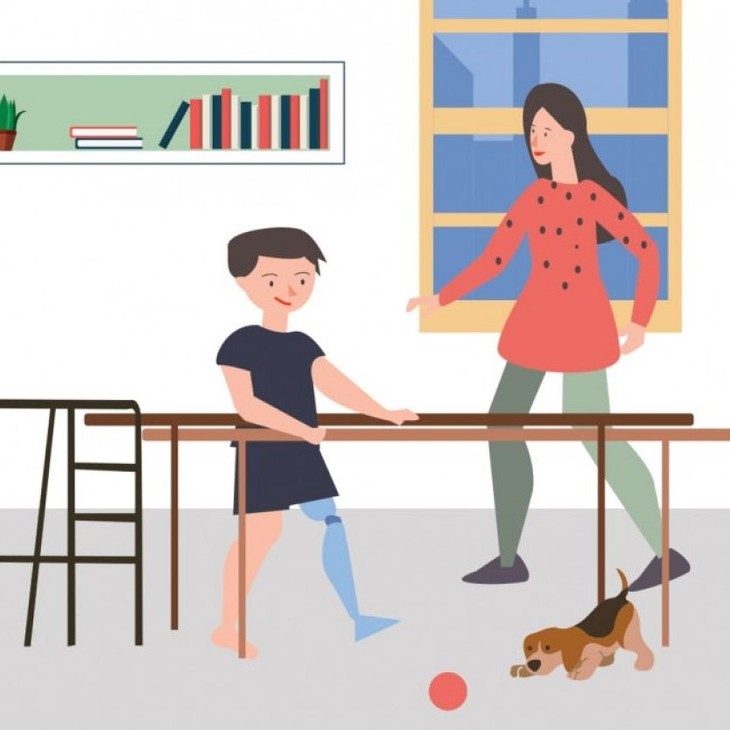 The Ministry of Health issues a handbook on COVID-19 prevention for PWD on April 20, 2020. (Photo: kcb.vn) |
When Bui Cong Thach, a native of Quang Tri central province, was a first-year student at the College of Science of Hue University, he was in a serious accident. Two thirds of his left leg was amputated to save his life.
Returning home after two months of treatment, Thach had lost interest in everything and felt powerless.
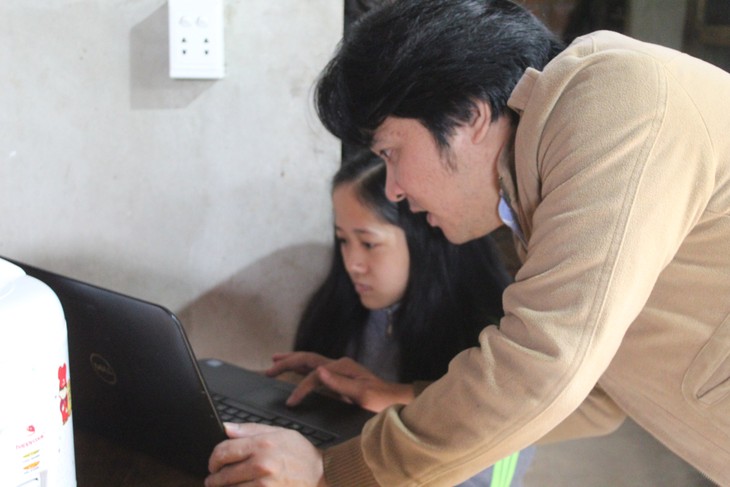 Bui Cong Thach is instructing a PWD in Cam Chinh commune, Cam Lo district, Quang Tri. Bui Cong Thach is instructing a PWD in Cam Chinh commune, Cam Lo district, Quang Tri. (Photo credit: Bui Cong Thach)
|
Nguyen Van Tay, a young man from a remote rural area in Chau Thanh district, Tay Ninh province, received a severe electric shock one day and lost both his arms. Tay recalled, “When I found out that I no longer had any hands, I felt extremely hopeless and scared. I had been the main breadwinner in the family. I was frightened thinking I would no longer be able to help my family and how awful my life would be.”
Nguyen Thi Ngoc Tam was born with osteogenesis imperfecta, also known as brittle bone disease, a genetic disorder that causes one’s bones to break very easily, even without a severe trauma.
Tam also suffers from numerous other diseases and has a very underdeveloped body. At the age of 31, she has the legs of a 2-year-old child and is unable to walk normally.
She shared her feeling, “I’m 31 years old now and I can't remember how many times I’ve broken a bone. It’s very painful and always takes at least 2 months to recover. A few times the same bone has broken again on the way home from the hospital, and I’ve had to return to the hospital without ever reaching home.”
Pain and sadness weigh on Tam’s mother, Ms. Nguyen Thanh Su.
Ms. Su used to work at Nam Dinh Construction College, but she had to take a leave of absence to care for her daughter and now does a little farming at home to make ends meet.
For 31 years Ms. Su has never had a good night’s sleep because she worries that one small inattention could lead to another bone fracture.
She told us, "It’s extremely difficult to make a plaster cast for a brittle bone fracture, which takes much longer to knit together than a normal fracture. Every time Tam goes to the hospital is an ordeal. Doctors at low level hospitals want to send her to a central hospital because they’re worried her fracture won’t knit or the bone will heal in a deformed position."
While talking to us at Tam’s house, she was reciting a poem she wrote:
“My childhood was imperfect.
Since I was born, my legs have been stunted.
The war continues in my blood and in my bones.
My childhood was bitter and limited.
Unable to skip a rope, pick a flower, catch a butterfly….”
Sound of a US Air Force helicopter spraying herbicide, starting the defoliation operation code named “Ranch Hand”
The chemical poison the US military sprayed on Vietnam between 1961 and 1971 not only destroyed the environment, it damaged four generations of Vietnamese people physically and emotionally.
21-year-old Phan Ho Thu Thao of Hoa Thanh district, Tay Ninh province, is one of nearly 5 million Vietnamese victims of toxic poisoning.
For 21 years, without a day of rest, Ms. Ho Thi Thu Van has taken her children, Phan Ho Thu Thao and Phan Van Ho, who have cerebral palsy and withered limbs due to Agent Orange, to the hospital for treatment.
“When Thao was born, we didn’t know she had Agent Orange/Dioxin in her system. When she was several months old, she could still roll over. It wasn’t until we saw that she was unable to stand up or walk that we took her to be examined and were told that her body contained Dioxin and had a form of cerebral palsy. Thao left school after completing the 10th grade,” said Ms. Van.
A sympathetic business that makes stone pictures offered Thao a job, but she had to refuse because of mobility issues.
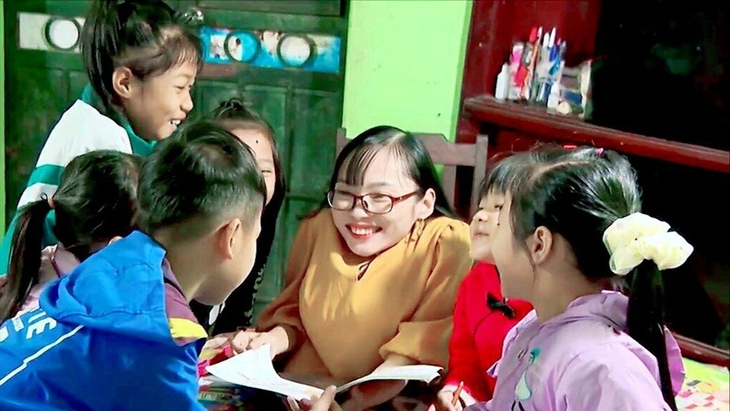 Nguyen Thi Ngoc Tam (third from right) and her students. (Photo: tuoitrethudo.com.vn) Nguyen Thi Ngoc Tam (third from right) and her students. (Photo: tuoitrethudo.com.vn)
|
Life looked brighter for armless Nguyen Van Tay when he was recruited by an art company in Binh Tan district, Ho Chi Minh City.
But COVID-19 messed up everything again. Tay was laid off under a company workforce reduction program.
Tay told us, “Finding a job isn’t easy for people with disabilities, who have to contend with the misconceptions of employers and co-workers on top of their disability.”
For approximately 1 billion people with disabilities worldwide, the COVID-19 outbreak in 2020 deepened existing inequalities in education, employment, community activities, and accessing health care.
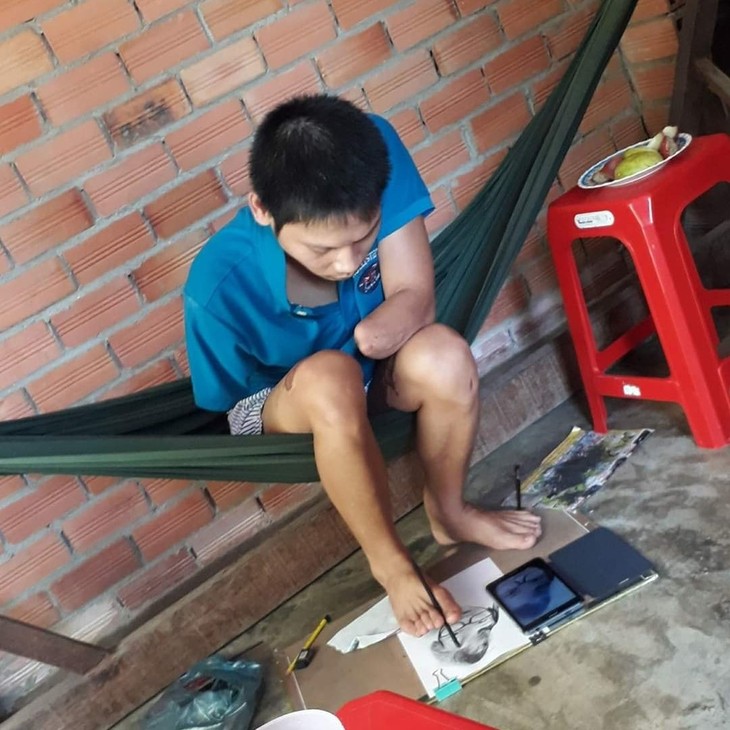 Nguyen Van Tay. (Photo credit: Nguyen Van Tay) Nguyen Van Tay. (Photo credit: Nguyen Van Tay)
|
Crystal-bone girl Tam has overcome many physical and psychological hurdles to realize her dream of becoming a teacher. For the past 17 years she has held free classes for children in her village and nearby areas.
Her special class - with no chalk, no board, no dais, no lesson plan, and no tuition – for primary and secondary students starts at 7.30 every morning, except for holidays or when Tam is out of town.
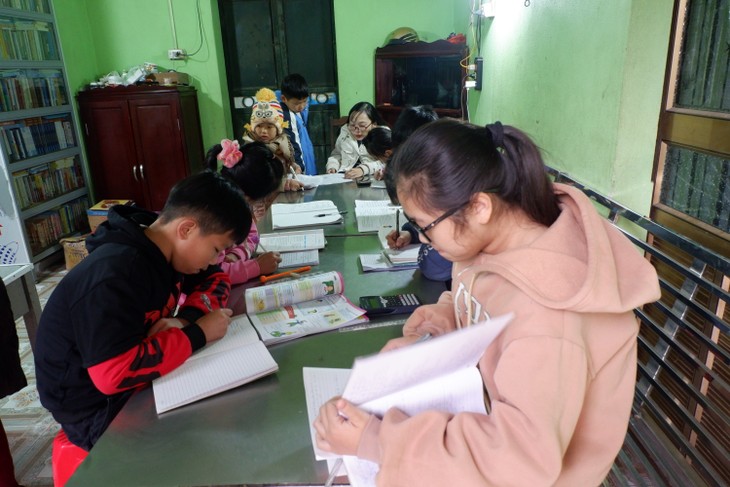
Tam and her students on January 17, one of the coldest days in the first cold spell of 2021. (Photo: Lan Phuong/VOV5)
|
The outbreak of the coronavirus pandemic forced Tam to halt the class temporarily but the children continued to study online during the period of social distancing.
Tam recalled, “During last year’s epidemic period, I couldn’t teach the children as regularly as before. But I’ve tried to make full use of Facebook to teach them but on a smaller scale. That way took me much more time and effort but could help the children not forget knowledge.”
Once the epidemic was under control and students could return to school, Tam will maintain the format of teaching which even has taken a toll on Tam’s health and she needs to take sore throat and cough lozenges constantly.
Struggling with everyday life and unequal access to health care and contending with natural disasters, epidemics affect the psychology and morale of people with disabilities.
What should they do to fight through their physical impairment and other people’s prejudices to reach personal achievement and success?
We’ll try to answer this question in our next report, entitled “Determination creates success for people with disabilities”.